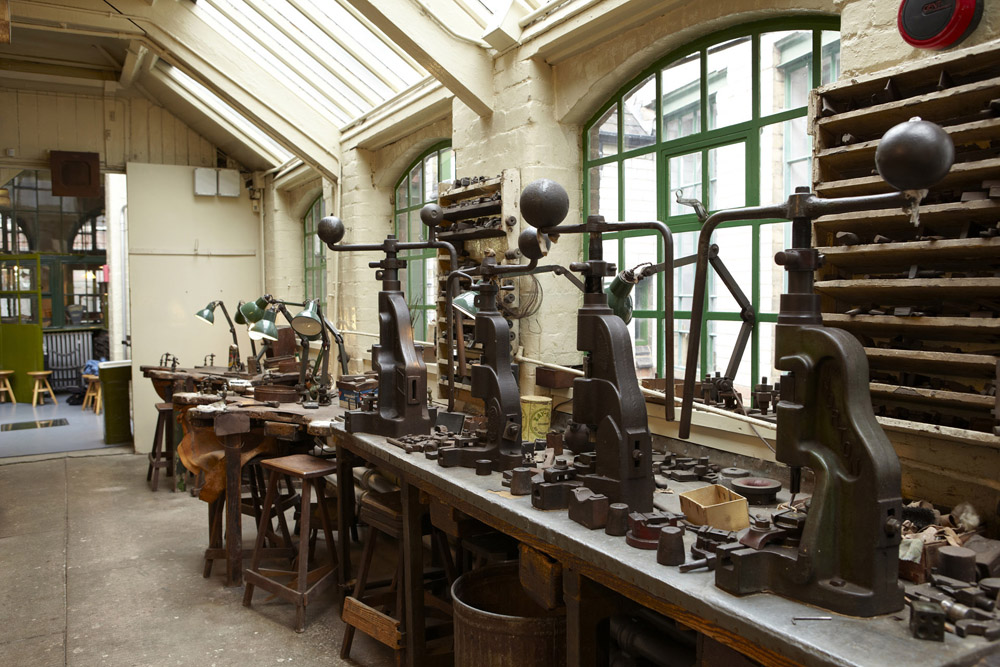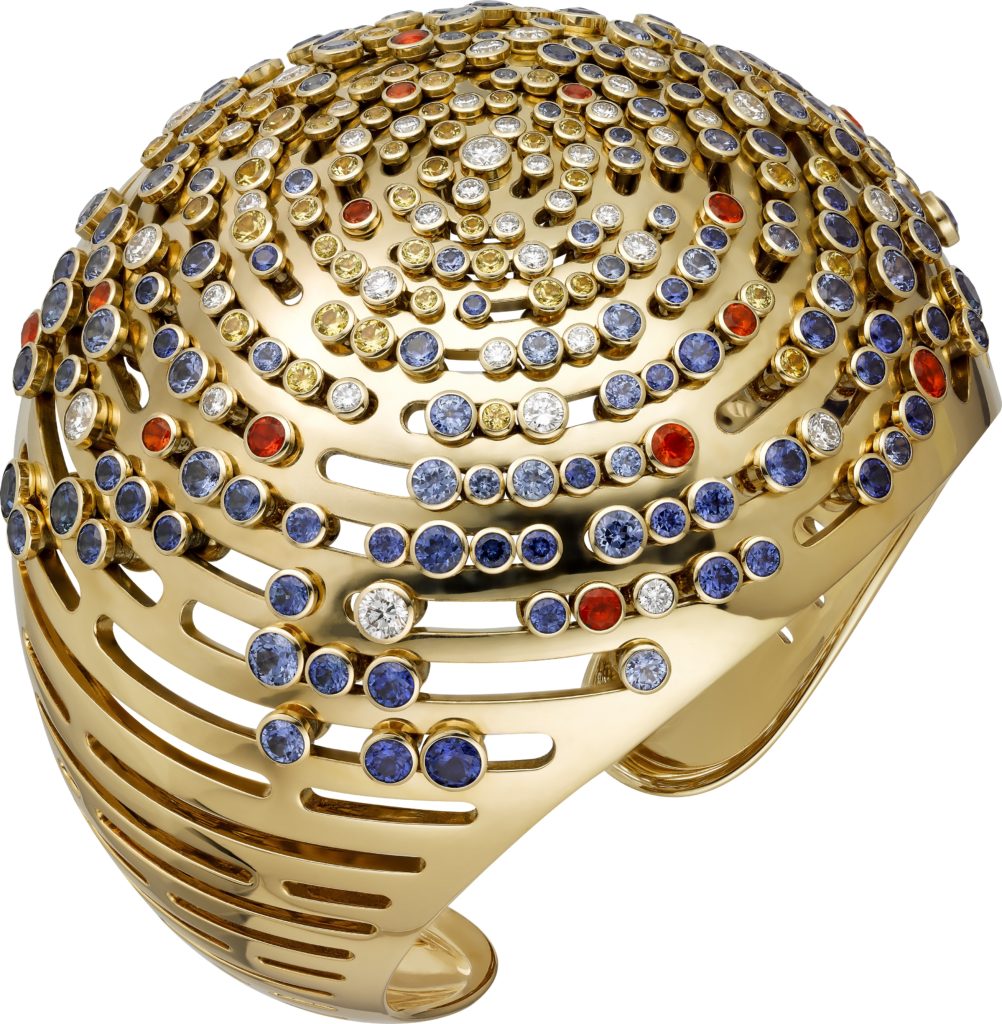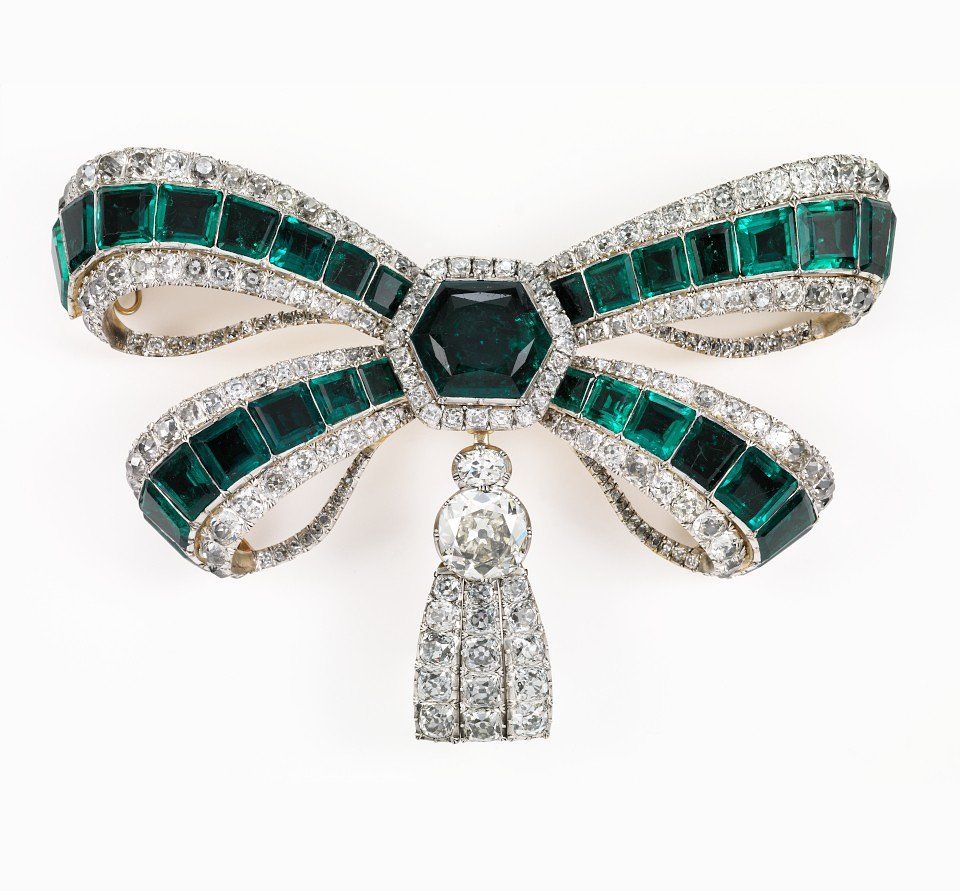Since June 2014, an exhibition has started in Birmingham and its objective is to make you better know the Jewellery quarter of this city. Indeed, few people know that the city was a Mecca of English jewellery making in the 19th century. But before telling you more about this event, a few historical details are in order.
- 1- The Jewellery Quarter Museum and its history
The presence of goldsmiths in this district is attested to as early as the 16th century, but the explosion of development in this district came in the 18th century and took on its full meaning in the 19th century. The city was a real industrial centre, and many manufacturers settled there to create pins, cufflinks, and various small metal objects, including toys. The district also became known for its workshops, which provided specific services to manufacturers, such as gilding on metal. At the end of the 18th century, there were 26 jewellers in the area, all trades and all levels of manufacture, from costume to more classical jewellery.
At the beginning of the 19th century, there were exactly 12 jewellery workshops employing almost 400 people. We are talking here about workshops using more precious materials than the census of the end of the 18th century.
It is estimated that over the course of the 19th century and into the early 20th century, more than 30,000 people were employed in the district, and that the workshops produced around 40% of the jewellery sold in England. At the same time, it seems that the district was one of the most important guarantee centres in the world, where a trademark office was set up in 1773. It is said that 12 million pieces are guaranteed in a year. I am puzzled by this figure, but it is not improbable either.
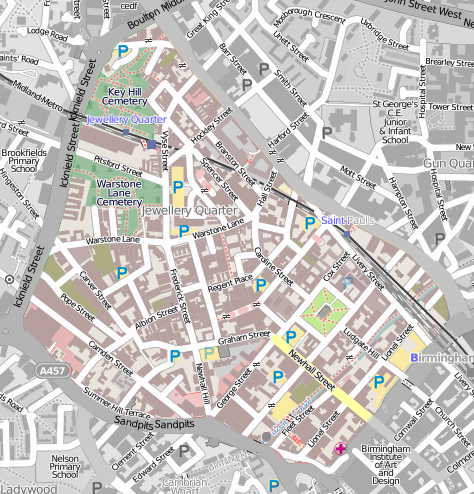
Map of the Birmingham jewellery district. Photo: Wikipedia
Important dates in the district include:
- 1825: The Birmingham and Staffordshire Gas Light Company was born, and by 1832 it was supplying gas cylinders which, by 1840, allowed all jewellers to supply torches.
- 1845: A delegation of jewellers went to Buckingham Palace to meet Queen Victoria and her husband. They offered a set of jewels to showcase the skills of the district’s manufacturers. The pieces were made by Thomas Aston. At that time, this delegation stated that 5,000 families depended on the economic health of the district.
- Mid-19th century: the district was the most lucrative economic sector for the city.
- As early as 1855: Parkesine, the first “resin” invented by man, was made in this district. It was made by Mr. Parkes from cotton fibres dissolved in nitric and sulphuric acid and mixed with vegetable oils. Highly flammable, it was eventually forgotten.
- 1890: Creation of the School of Jewellery and Silversmithing
- 1914: Over 30,000 people work in the district
- From 1920: decline of the district
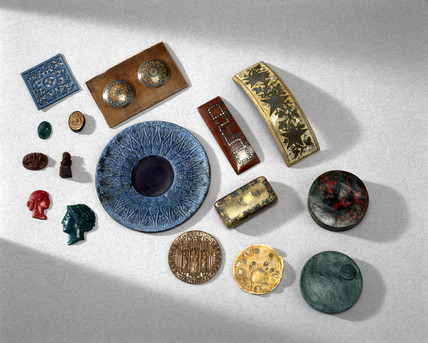
Elements made in Parkesine between 1855 and 1891. Photo: © Science Museum / Science & Society Picture Library
During the 20th century, several initiatives tried to revive the district, but nothing was done. In 1965, 8,000 people were working in the streets of the district, and by 1985, only 4,000 were employed. In the 1990s, the district underwent a major urban renewal programme.
When the Smith & Pepper company closed in 1981, it left behind archives and, above all, equipment and machinery. Nine years later, a museum was opened to the public, offering visitors the chance to immerse themselves in the history of this major centre of English jewellery manufacture.
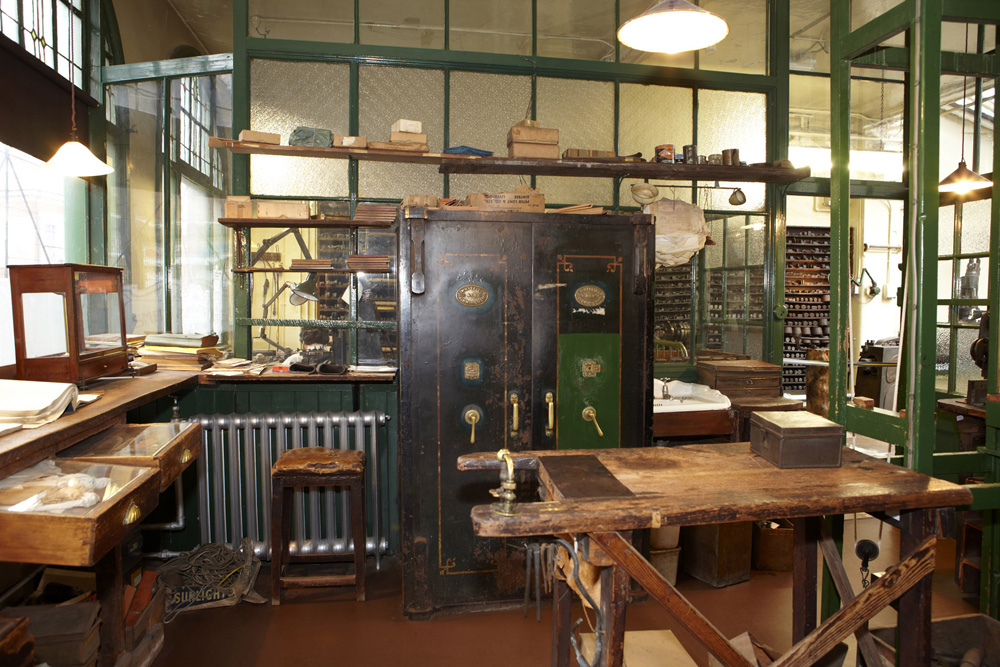
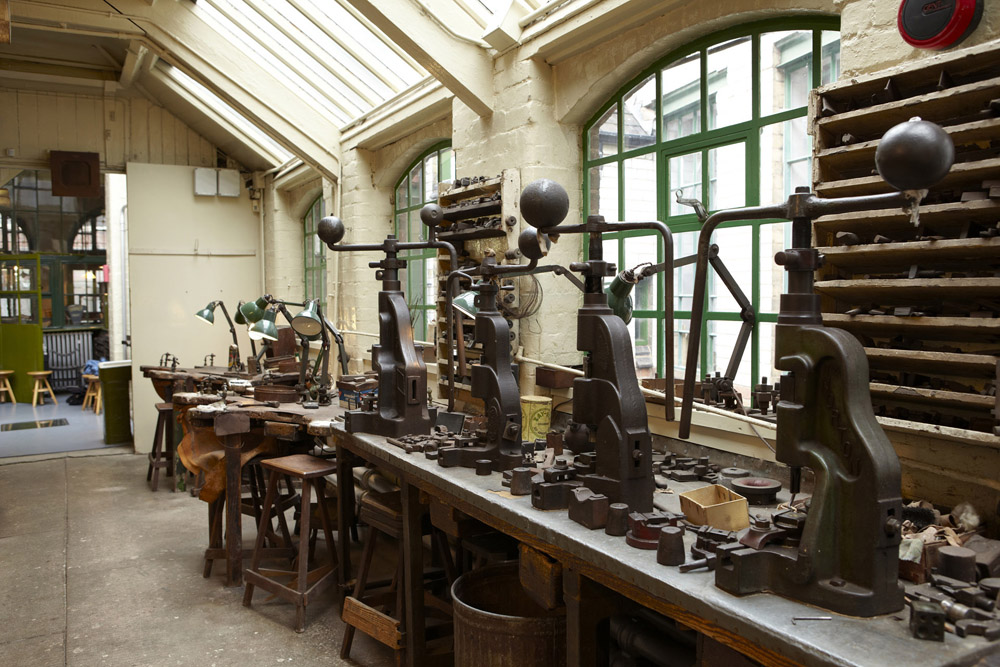
Photos showing the interior of the museum. You can see the old machines used by the workers. Photo: Birmingham Museums and Art Gallery
- 2- The exhibition
The aim of the exhibition – which runs until June 2015 – is to focus on the history of the area during the First World War. As mentioned above, before the war the district employed over 30,000 people. But by the end of the war, more than 200 hundred houses will have closed and many employees will be unemployed.
The aim of the museum is to show you how the district nevertheless adapted to these upheavals. Through numerous archival documents, you can explore the production of several factories of the time. Finally, it takes you to meet the women who – as in France – took over when the men left for the front.
If you are going to England in the coming weeks/months, I can only encourage you to visit this exhibition.
Museum of the Jewellery Quarter
75-80 Vyse Street, Hockley, Birmingham, B18 6HA
0121 348 8140
See you soon
